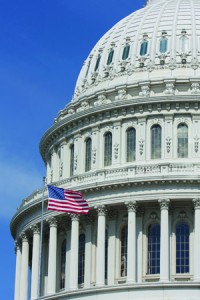By Steve Brawner
© 2015 by Steve Brawner Communications, Inc.
Some time in the 1970s, the Republican Party pledged allegiance to a strategy known as “starve the beast,” which said that the way to reduce the size of government was to reduce the taxes going into it. President Reagan in 1981 used another metaphor: reducing children’s allowance. Democrats, happy to increase government without paying for it, largely acquiesced.
That gentlemen’s agreement has led to a sustained period where government has collected much less in taxes than it’s spent. In 1980, the national debt was less than $1 trillion. Today, it’s more than $18 trillion.
The strategy obviously didn’t work. In fact, starving the beast has only made it hungrier, for two reasons.
One is that government is not a child, and it’s not bound by the same rules as the rest of us. It does not need an allowance because it can always forcibly borrow from the future – until that day, which is coming eventually, when something will happen so that it no longer can.
It also didn’t work because of a fundamental principle of economics those starve-the-beasters should have known, which is that people typically buy more of something when it’s cheaper, and less when it’s more expensive.
Since 1980, the United States government has outspent the Soviet Union to win the Cold War and has fought many other “hot wars,” including the unending ones in Iraq and Afghanistan. Spending on Social Security, Medicare, Medicaid and other government health care programs has ballooned.
As a percentage of gross domestic product, government spending is about the same as it was in 1980. But that’s a mirage. Very expensive, unbreakable promises have been made to seniors, federal pensioners, and health care recipients that will cause government to grow. Money that should have been invested in the Social Security and Medicare trust funds to prepare for the retirement of the baby boomers instead was spent elsewhere. Meanwhile, important investments in other areas have been delayed, such as maintaining the nation’s highways and bridges.
Why did the American people allow all of this? Because we haven’t felt the costs of our decisions enough to demand change. In fact, we’re the ones who demand that the status quo continue, and why wouldn’t we? Year after year, we’re getting government at a huge discount at our kids’ expense. We don’t want to pay full price, and we punish those elected officials who ask us to do so.
“Starve the beast” doesn’t require hard choices or ask Americans to take responsibility for their actions. Just cut taxes (“Yippee!) and the government will sort of lose weight on its own. It works for everyone: Republicans, Democrats, and average Americans – everyone, that is, except future taxpayers.
Unfortunately, “starve the beast” is not only alive and well, but it remains Republican Party orthodoxy. Many Republican elected officials, including many Arkansas state legislators and the state’s entire congressional delegation, have signed the Americans for Tax Reform’s “Taxpayer Protection Pledge” stating that they won’t raise taxes. Meanwhile, they did not sign a corresponding “No more spending pledge.”
In other words, we do not promise to keep government from growing, but we do promise not to pay for it when it does. See the problem?
The only way the government will stop growing is if we actually start paying for it. No one wants to pay more taxes, including me, but – and it will probably take a balanced budget amendment to make this work – we should pay for the full cost of the government we have chosen to create. We also should start paying down the debt we’ve already accumulated.
The thing about taking responsibility for your actions is that it makes you change your actions. We should feel the effects of big government every time we collect a paycheck and every time we go to the store. Never again should a war be fought where civilians pay no extra cost. If taxpayers start paying the full cost of government, then it almost certainly will shrink. But If we decide we like big government, at least we’ll admit it and pay for it honestly, without all the debt and hypocrisy.
It’s time to finally realize, after all of these years, that WE are the beast. We’re the ones getting fatter, at our children’s expense.
When will we realize it? When we actually pay for our government – and give ourselves a chance to start feeling full.

